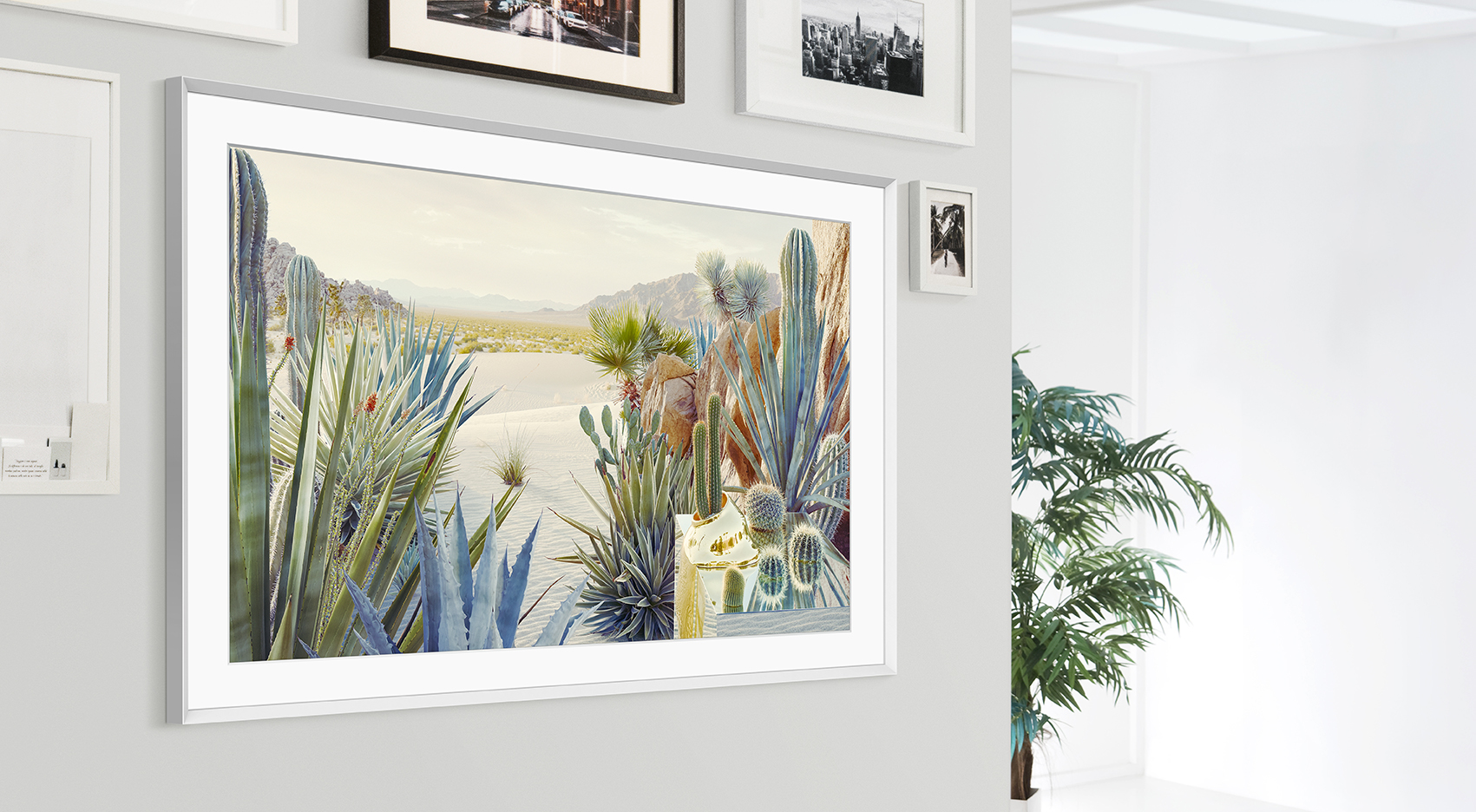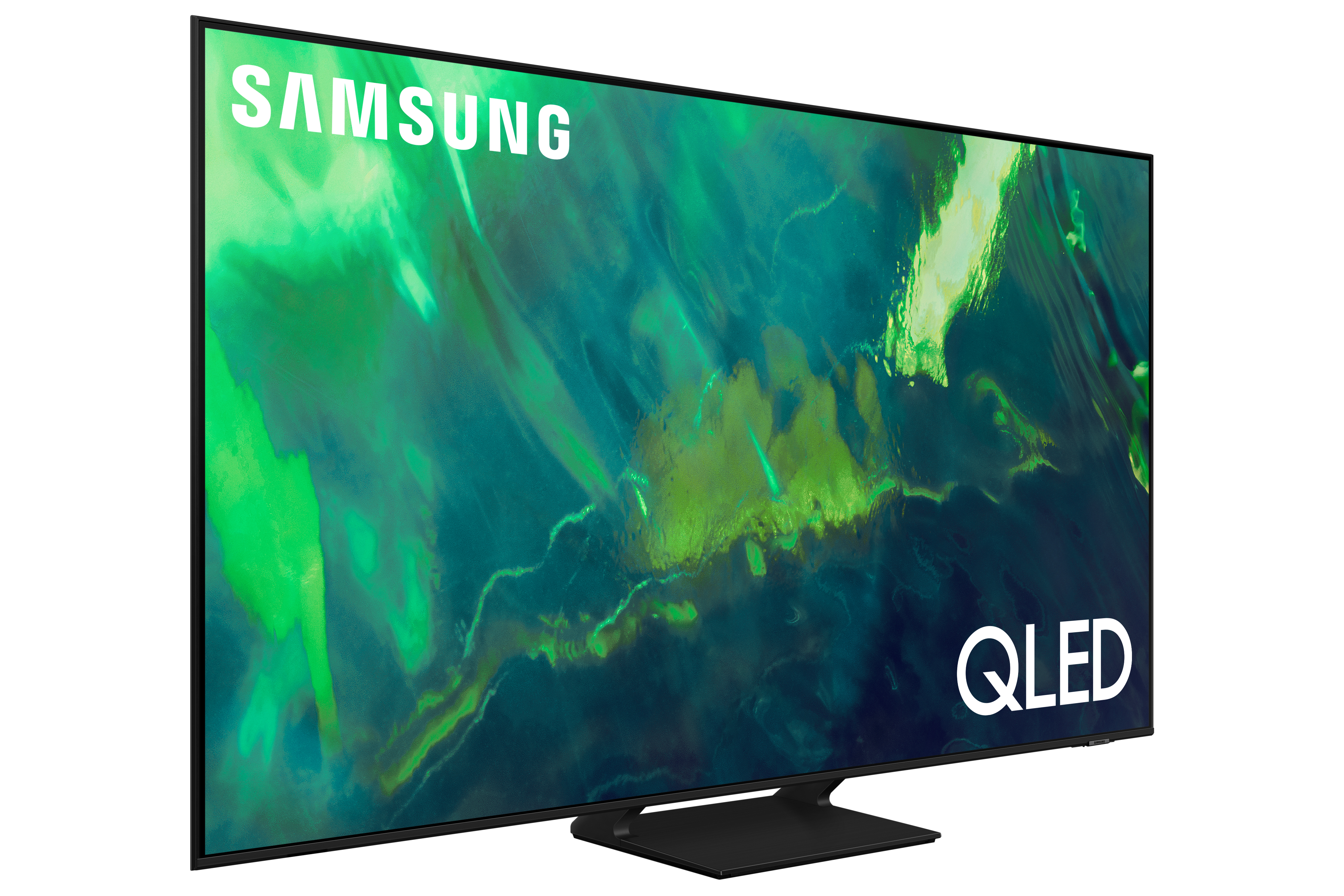Samsung Reveals First AMD FreeSync Premium Pro TVs, Mini LED Gaming Monitors
Showing love for both gaming TVs and gaming monitors
Samsung just leveled the playing field a bit in the battle between TVs and gaming monitors. PC monitors have long held an advantage over TVs for gaming, largely due to speedier refresh rates and response times. The best gaming monitors also fight screen tearing with some flavor of Adaptive-Sync. TVs, meanwhile, have made advanced display technologies, like OLED and mini LED, more attainable. Today, Samsung threw bones toward both corners, announcing the first TV with AMD’s most advanced screen tearing fighting technology and the marriage of its “Quantum Mini LED” technology and Samsung Odyssey G9 curved gaming monitor.
During its Unbox and Discover event today, Samsung debuted the first TVs to include AMD FreeSync Premium Pro, which will work with both PCs and gaming consoles, like the new PlayStation 5 and Xbox Series X. FreeSync Premium Pro will be available on Samsung’s 4K resolution Q70A and up, as well as the 2021 version of its customizable TV, aptly named The Frame.
There are numerous TVs available from Samsung, as well as from LG, with FreeSync Premium, which calls for a minimum 120 Hz refresh rate and adds low framerate compensation (LFC) compared to standard FreeSync. FreeSync Premium Pro takes things a step further by also supporting HDR content.
The vendor’s also throwing in a new Game Bar, which helps gamers monitor “critical aspects of play,” according to today’s announcement, and use Samsung's Super Ultrawide Gameview feature, enabling ultrawide aspect ratios more commonly found in PC monitors than TVs.
But the electronics giant also had news to share with gamers committed to PC monitors, however. The Samsung Odyssey G9 needed no help being extreme. With a 1000R curve, it’s already as curvy as gaming monitors get today. However, Samsung upped the premium ante today by unveiling the 2021 version of the monitor with Quantum Mini LEDs. The 2020 version uses QLED, which is just another type of LEDs invented by Samsung for improved brightness and color.
Quantum Mini LEDs are already available in Samsung TVs, but the 2021 Odyssey G9 will mark one of the first mini LED gaming monitors, if not the first (depending on when it’s actually available to buy).
According to Samsung, its Quantum Mini LEDs are 1/40th the height of a standard LED (what you’ll find in the vast majority of gaming monitors). Additionally, “instead of using a lens to disperse light and a package to fix the LED in place, [a] Quantum Mini LED has incredibly thin microlayers filled with many more LEDs.” Samsung’s Quantum Matrix Technology is supposed to enable precise control over those tiny LEDs to help fight blooming, also known as the halo effect. This would be particularly impressive, as even premium gaming monitors with FALD backlights can fall victim to the halo effect.
Get Tom's Hardware's best news and in-depth reviews, straight to your inbox.
We already saw what the power of mini LEDs could do for image quality, particularly contrast, in our review of the Asus ProArt PA32UCX, a monitor for professionals. But we’ve yet to see the technology in a PC monitor built for gaming. Asus and Acer have both promised to release their own mini LED gaming monitors, but that hasn’t happened yet.

Scharon Harding has over a decade of experience reporting on technology with a special affinity for gaming peripherals (especially monitors), laptops, and virtual reality. Previously, she covered business technology, including hardware, software, cyber security, cloud, and other IT happenings, at Channelnomics, with bylines at CRN UK.
-
gamerk316 Considering that Samsung's TV lineup for 2021 already included HDMI 2.1's VRR capabilities and 4k120, it's not shocking they got Freesync Pro certification as well. They pretty much met all the required specifications out of the box.Reply
Frankly, we're at the point where TV's have started to outperform PC Displays as far as built-in capabilities go. Which is a shocking turnaround from just a decade ago.
I'm seriously considering one of Samsung's Mini-LED TVs as my next primary display. I love my OLED (LG B6) to death, but sadly a year of WFH has kind of exposed OLEDs flaws; the panel wear if becoming quite evident. I know newer OLEDs are more resistant to this type of degradation, but it looks like Mini-LED is "close enough" to OLED picture quality wise where I'll accept the downgrade in quality. -
gamerk316 ReplyJTWrenn said:Meh call me when they have a MicroLED gaming monitor
Yeah, that's where things are probably headed. Still a few years to get everything affordable to the point where they can shrink it down below the 88" form factor and still turn a profit though. Mini-LED is kind of the halfway step until Micro-LED gets ready for primetime. But once Micro-LED is ready, we'll basically have a better version of OLED without OLEDs downsides. -
hotaru.hino Reply
This has surprised me as well, as I figured they'd be at least on parity with each other. But I figure the manufacturers think most people who use computers are fine with cheapo TN 60Hz panels and the only people who want features are PC gamers. But there's plenty of people who watch content on their big screen and you can sell them with buzzwords and comparison videos.gamerk316 said:Frankly, we're at the point where TV's have started to outperform PC Displays as far as built-in capabilities go. Which is a shocking turnaround from just a decade ago.


